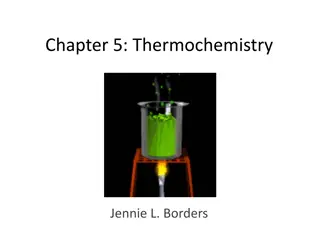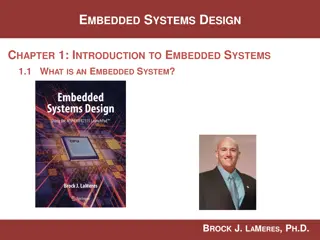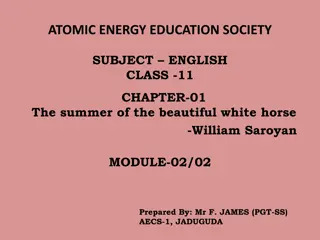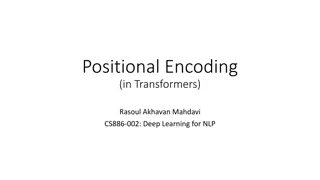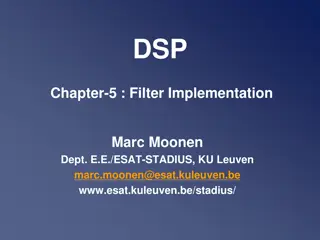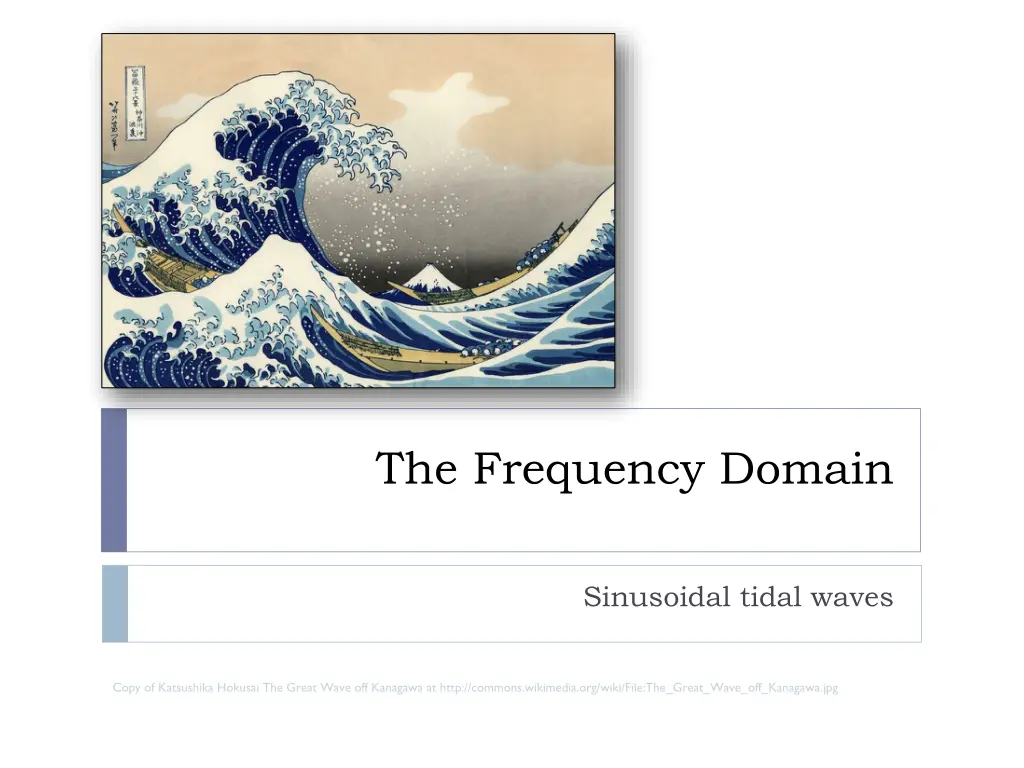
Understanding Frequency Domain in Image Analysis
Explore how images can be represented in different domains like spatial and frequency domains. Learn about the various frequency domains used in image analysis and processing, including Discrete Cosine, Fourier, and Wavelet. Discover how functions can be decomposed into sinusoids for efficient processing.
Download Presentation

Please find below an Image/Link to download the presentation.
The content on the website is provided AS IS for your information and personal use only. It may not be sold, licensed, or shared on other websites without obtaining consent from the author. If you encounter any issues during the download, it is possible that the publisher has removed the file from their server.
You are allowed to download the files provided on this website for personal or commercial use, subject to the condition that they are used lawfully. All files are the property of their respective owners.
The content on the website is provided AS IS for your information and personal use only. It may not be sold, licensed, or shared on other websites without obtaining consent from the author.
E N D
Presentation Transcript
The Frequency Domain Sinusoidal tidal waves Copy of Katsushika Hokusai The Great Wave off Kanagawa at http://commons.wikimedia.org/wiki/File:The_Great_Wave_off_Kanagawa.jpg
Domains Images can be represented in different domains Spatial domain the strength of light at points in space Frequency domain the strength of patterns within an image Frequency domain is useful for Image analysis Image compression Efficient processing 2
Frequency Domain Various frequency domains Discrete Cosine used in image analysis and compression Fourier used in image analysis and processing Wavelet used in image analysis and compression Haar and others Each domain defines a set of patterns from which all images can be composed The DCT and DFT domains use sinusoidal patterns 3
Sinusoids A sinusoidal is characterized by the amplitude, frequency, and phase 4
Functions into sinusoids Any function can be represented as the sum of sinusoids Consider a one dimensional square wave . Can it be represented as the sum of non-square waves ? 0.4 0.2 2 4 6 8 10 -0.2 -0.4
Decomposing functions into sinusoids 1 0.75 0.5 0.25 2 4 6 8 10 -0.25 -0.5 -0.75 -1 Start with a sin wave of the same frequency as the square wave. This is the base or fundamental frequency. 6
Decomposing functions into sinusoids 1 0.75 0.5 0.25 2 4 6 8 10 -0.25 -0.5 -0.75 -1 Add a 3rd harmonic to the fundamental frequency. The amplitude is less than that of the base and the frequency is 3 times that of the base. 7
Decomposing functions into sinusoids 1 0.75 0.5 0.25 2 4 6 8 10 -0.25 -0.5 -0.75 -1 Add a 5th harmonic to the fundamental frequency. The amplitude is less than that of the base and the frequency is 5 times that of the base. 8
Decomposing functions into sinusoids 1 0.5 2 4 6 8 10 -0.5 -1 Add a 7thand 9th harmonic to the fundamental frequency. 9
Decomposing functions into sinusoids 0.75 0.5 0.25 2 4 6 8 10 -0.25 -0.5 -0.75 Adding all harmonics up to the 100th. 10
Sinusoids (1D) Consider the following sinusoidal function f can be understood as a row profile Amplitude is determined by A Phase (shift) is given by phi Frequency is controlled by u if u = 1 there is one cycle spanning the image U can be understood as the number of cycles per image width 11
Discrete sinusoid Take the continuous sinusoidal function into the discrete domain via sampling at unit intervals. One effect is to place an upper limit on the frequencies that can be captured via sampling. U must be less than N/2 in order to be recoverable by the discrete samples. This is the Shannon-Nyquist limit. Higher frequencies generate aliases
Aliasing example Consider a sinusoid such that u=1 over a span of 8 units. Consider a sinusoid such that u=7 over a span of 8 units. The resulting samples are identical. The two different signals are indistinguishable after sampling and hence are aliases for each other.
Frequency Domain The central idea in frequency domain representation is to Find a set of orthogonal sinusoidal patterns that can be combined to form any image Any image can be expressed as the weighted sum of these basis images. The DFT and DCT are ways of decomposing an image into the sum of sinusoidal basis images
How to determine the amplitudes? The DCT and DFT transformations are ways of decomposing a spatial image into sinusoidal basis images. The forward DCT goes from spatial to frequency. The inverse DCT goes from frequency to spatial. The DCT and DFT are invertible no loss of information either way 16





